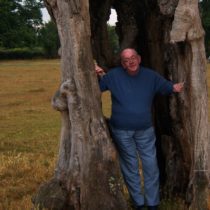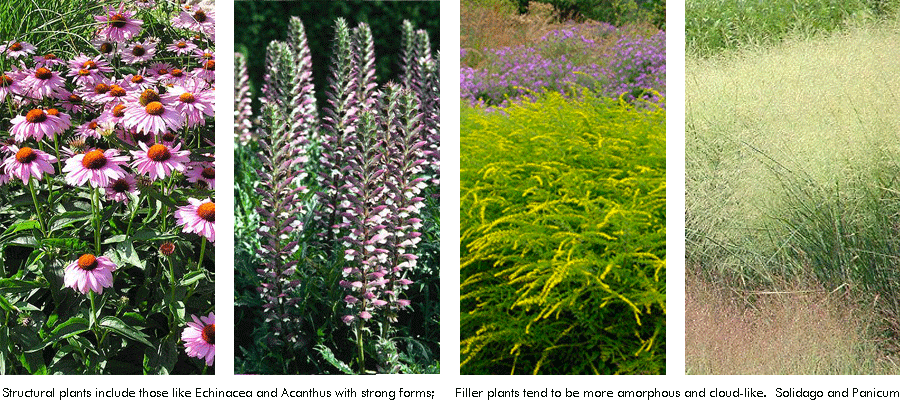Landscape Architecture for Landscape Architects › Forums › PLANTS & HORTICULTURE › Beyond the Border: How to Use Perennials and Grasses in Landscape Settings
- This topic has 1 reply, 4 voices, and was last updated 13 years ago by
 Jason T. Radice.
Jason T. Radice.
-
AuthorPosts
-
July 13, 2011 at 2:14 am #161607
 Thomas RainerParticipant
Thomas RainerParticipantDo you like the look of Oudolf-style perennials and grasses, but aren’t sure how to use them in larger landscape settings? Did you BLA or MLA program focus exclusively on woodies, leaving your knowledge of herbaceous plants a bit light? This is the third post in a series I’m doing on how to use perennials and grasses in landscape settings. I’ve made the claim that perennials and grasses–possibly the most dynamic plants a designer can use–ought to be used more often in our built landscapes. Imagine our public spaces draped in a rich tapestry of perennials and grasses inspired by the patterns and palettes of our native vegetation.
This post focuses on which plants to select. To read the full post, click here for the entire blog entry.
July 13, 2011 at 7:07 pm #161610 Jason T. RadiceParticipant
Jason T. RadiceParticipantGreat blog post…thanks for the info!
July 14, 2011 at 1:12 am #161609william martin
ParticipantOne need only look to ‘natural’ habitat for ‘inspiration’ and guidance.Way more informative than any book!
July 14, 2011 at 5:44 pm #161608 Les BallardParticipant
Les BallardParticipantI think I have a few beefs and try to not be to florid (no pun intened) in posting this.
1. My main angst is not planting native wild species but favouring park and garden varieties with increased cost because they have a different colour or upswept branches or whatever. In the UK the only wild variety of tree planted on steets since Victoria was born is probably sycamore – not a native british specie and now escaped to woodland where it has to be regularly cut back, often by volunteer labour. The timber is fine but 500 saplings a year per tree, stopping native species germinating, is not good and it hardly ever gets to a saleable timber stage (fence posts possibly).
2. Hedging and so on is often cheap anti – personnel plants that need little maintenance. Thorns abound and, while berries are nice for the birds, ones people can eat would be better. As far as I know no fruit grown on any school site is ever consumed by the children, officially or otherwise. Further, no money is ever allocated to making a good laid or layered hedge or pruning trees for an effect. If our forefathers could tie branches together to get joins and so on, why can’t we? Similarly, no-one ever plants a row of oaks to make a hedge and no-one ever seems to know their business. In one park alone they were going to plant foreign oaks (and the wrong specie for the area), turkey oaks in excess of a safe hybridisation level, a poisonous tree next to the horse path they thought was native cos it has berries in the spring and – having levelled the site by disposing of white willow – pussy and other willows for no practical purpose (e.g. biomass for an incinerator or making into garden screening/fencing rolls).
3. Wild flower mix grass seed is often generic and not specific to an area. Not only is the mix of grass varieties, fescues, etc. wrong but so are the supposedly wild flowers. These can come as one or 2 different mixes and there is no reason not to ring the supplier with a list of what is, was or should be on the land as you might be advised by a local wildlife group or expert. Neither is there any attempt to place reserved sods with other wildlife, eg a butterfly specie specific habitat mix being considered. Quite a small area reserved then transferred in this way when all is done can preserve the occurrence of a specie in an area. In the same fashion it should be the case that trees are planted in a medium containing mycellum natural to that specie and from the relevant depth. Covering an area with spent mushroom compost and grassing it over is not conducive to rampant growth of trees and it does not allow the assistance trees normally receive, possibly in layers, from the said fungi that should be in the soil by way of feeding them nutrients their own roots do not then need to reach. In a similar fashion, where tree roots almost meet to form synapses (yes, a wood has a brain) this is not assisted with a deep enough subsoil.
4. People responsible for a site do not set up a growing area to produce what they will then eventually plant out free, or enter into agreements with local schools, etc., or consider that what they plant should be local stock. They not only fail to save money and do the right thing in this way, they also fail to allot funds to maintenance for a period, especially re watering but also re pruning, removing tree growing tubes and ties, removing litter including building rubble and establishing a unified microenvironment. In the UK for example, this might include setting up a warren for rabbits, some owl, bird or bat boxes or a tower, leaving and making safe the odd old or dead tree that will provide habitat, upright or prone, formalising rather than just draining away a spring or well, right back down to the types of grass and plant. If this is done right then there is scope to allot some areas to introduced plants for general appeal. If you plant pampas grass in a bed, for example, you may get some stems stolen for dried flower arrangements but are unlikely to have a herd of capybaras to browse them! It is also possible to use semi formal beds to grow such things as rosemary or durians, lavender or coconuts that may have some amenity and relevance to major stakeholders and their ethos or public face. On this basis, they may then pay toward the supply and upkeep of those plants and tend/clear them of litter.
I could go on but had best not lol. Luv n Lite
-
AuthorPosts
- You must be logged in to reply to this topic.


